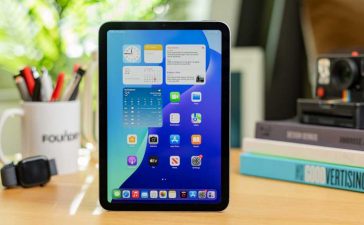Puck cofounder Jon Kelly agrees.
“[There will be] a lot more artificial intelligence promiscuity than anyone imagines,” Kelly said. “I think that subprime post-decline brands will rely on AI in profound, currently unprecedented ways to create their content and stay afloat.”
Events become even more important …
Live events have been one of the bright spots of the industry since the pandemic, and that trend shows no signs of abating in the new year.
“I anticipate, at least in business-to-business marketing, we’ll see fewer ‘spots and dots,’” said Stinchcomb, “and more collaborative and customized partnerships centered around events that convene premium audiences and communities that will inevitably drive bigger returns in the long term.”
Sara Badler, chief revenue officer at The Guardian U.S., echoed the sentiment.
“Sports and events will be bigger than ever in 2025,” Badler said. “People want industry events, outings, opportunities for summits, and engaging lunches—all reminiscent of the 2000s.”
… but are due for a correction
Naturally, nothing good can last, and some publishers are preparing for the events market to adjust after years of growth.
“After a boom in live programming over the last few years, we’re going to see Darwinism step in to rightsize the industry,” said Axios chief revenue officer Jacquelyn Cameron. “Only strong programming will survive, and others will start to dwindle.”
The traffic referral landscape becomes more splintered …
Sources of traffic that publishers once relied on, like search and social media, continue to send fewer referral readers to publishers.
“We’re in an era of appropriate selfishness,” said Dotdash Meredith CEO Neil Vogel. “If you’re a platform, you’re under no obligation to send us traffic.”
The WSJ’s Stinchcomb agrees.
“The referral/traffic ecosystem will continue to evolve, placing even greater emphasis on the value of audiences that come to your platforms organically,” he said. “As new social platforms and chatbots emerge, audiences are becoming increasingly fragmented, presenting both challenges and opportunities and reshaping how users discover and engage with content.”
… but publishers with direct connections reap the benefits
The increased difficulty of acquiring readers will put publishers with loyal audiences in a stronger position.
“Publishers are going to discover how little raw scale is worth,” said Semafor cofounder Ben Smith. “We’ll see more entrepreneurial, focused, and intelligent news products targeting smaller, engaged audiences.”
These direct relationships are also attractive to advertising partners, who value the insights that come as a byproduct of the connection.
“I also believe there will be an increased desire for brands to have a more direct relationship with their audiences,” said Bloomberg Media CEO Karen Saltser.













